When we envision transiting a canal, we visualize going through locks, like the Rideau Canal at home; however, the Suez Canal does not have any locks. It is a long narrow channel connecting the Mediterranean to a couple of small lakes and then the Red Sea. A connection between the Nile and the Red Sea existed as early as 2000 B.C., but fell into disrepair several times over the centuries, before being permanently closed around 800 A.D. The current canal is between the Red Sea and the Mediterranean Sea and was opened on the 17th of November 1869. The canal was closed from 1967 through 1975 due to ships scuttled in the canal during the 1967 Arab-Israeli war. During that time, 14 cargo ships were trapped in the canal at Bitter Lake for 8 years!
Just prior to taking on the first pilot for the canal, Becky was informed that we could not be on the bridge while there was a pilot on board – especially Becky as a female. The Captain did not want to do anything that might offend or upset the pilot. We were told that the Suez pilots are frequently grumpy and difficult to deal with. The Egyptian bureaucracy challenges the ships, and the fees are very high – any change or anything out of line causes the fees to increase. The Suez Canal Authority knows it has a captive audience and they know how much it would cost the ships not to use the canal – so they only make it a little bit less expensive than travelling all the way around the Horn of Africa!
The first bit of oddness we noticed was that a canal crew was taken aboard by hoisting up a small boat using the “Suez crane”. The crew remained in the boat while it was hoisted up to the Upper Deck (the lowest above-deck level on the ship). We took aboard three crew members, who appeared to do nothing. Just before that, we had taken aboard a pilot and one other man from a pilot boat. The other man turned out to be the “electrician”, responsible for the Suez Canal Projector. This is a light that is rigged at the front of the ship just for the Suez Canal transit. It is so far forward on the ship that it is useless to the bridge. The officers we talked to think that it may be a legacy requirement – similar to the Suez crew. These requirements provided employment, so the jobs are kept in place even though they are obsolete.
After taking the pilot and Suez crew onboard, we proceeded south through the Port Said bypass channel. At the 28 km mark, the buoys changed sides – that is, the red buoy moved from the left side to the right side. This is the arbitrary point of the canal where we change from “returning to port” to “leaving port”. When we arrived at the El Qantara bypass, we tied up alongside the canal to await the north bound convoy. At this point we discovered the function of the rest of the Suez crew. The Suez crew gathered in their boat and they were lowered to the canal. They were responsible for bringing the stern lines ashore. There was a crew on another boat waiting at El Qantara to bring the bow lines ashore. We were amused at how much more efficient the local crew was, and pondered again exactly why we needed to bring a crew along with us down the canal. The only reason other than legacy we’ve been able to come up with is emergency mooring. There are bollards along both shores of the canal every few hundred meters, so if we needed to stop for some reason, perhaps having a crew on board to bring the lines ashore could make the process quicker.
The northbound convoy was a parade of ships led by one container ship, then a submarine (which we believe to be British), which proved to be quite entertaining. We sat and watched the passage of the ships of the North Bound convoy for 4 hours (military, container ships, bulk carriers, and finally tankers). We’re guessing that the container ship led the submarine to make the start of the convoy more easily visible. Most of the ships in the northbound convoy were large container ships. Currently, there are two southbound convoys and one north bound convoy per day. The first southbound convoy leaves at 1 or 2 am and proceeds to Bitter Lake, where they anchor and await the passing of the northbound convoy. We were part of the second convoy, so we tied up alongside at El Qantara and waited. Our convoy was only 4 ships, but perhaps the first convoy was larger.
When we finally departed it was already 4 pm and there was only an hour and a half of daylight left. We enjoyed sitting out on deck and watching the world go by. The Sinai (east) side of the canal is mostly desert – and rather flat desert at that. The Egypt mainland (west) side of the canal is mostly green.
As the sun was setting we arrived at Ismailia, where there is a small lake. We were amused at all the fancy resorts along the shores of the canal and the small lake. It was not that warm outside, so the resorts were empty – it must be the off season. We could not imagine why anyone would want to go to a resort on the Suez rather than on the Red Sea or Mediterranean, but apparently people do.
Once the sun dropped, the canal became a sea of lights – not too exciting, especially when you can’t go to the bridge and see the radar.
Overall, the Suez transit was neat but not nearly as interesting as we had expected. We suspect that the Panama Canal would be more exciting, as there are locks involved. We’ll have to wait for the report from Becky’s parents, who are taking a cruise through the Panama Canal in April.
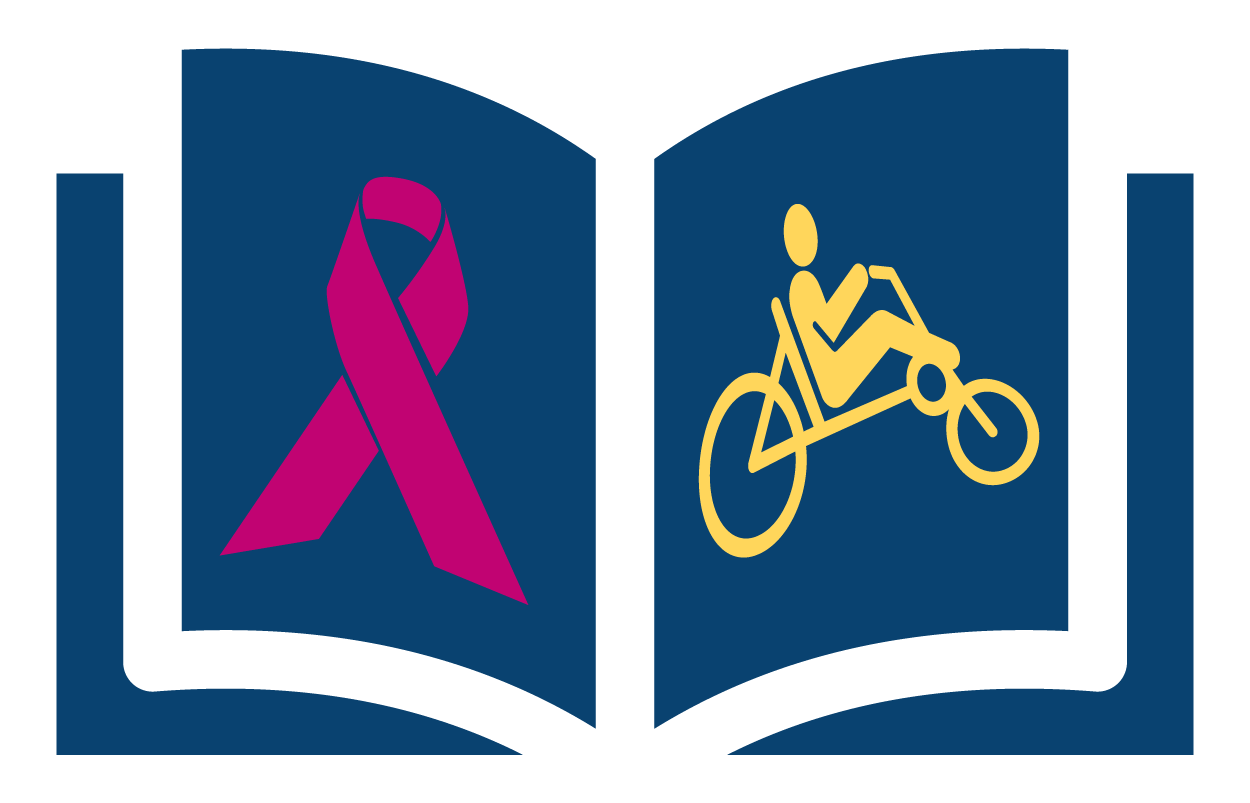
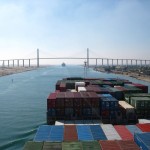

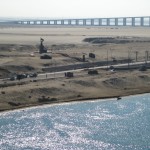
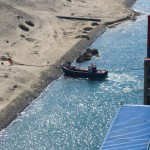
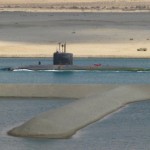
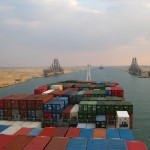
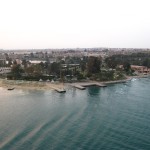
Leave a Reply